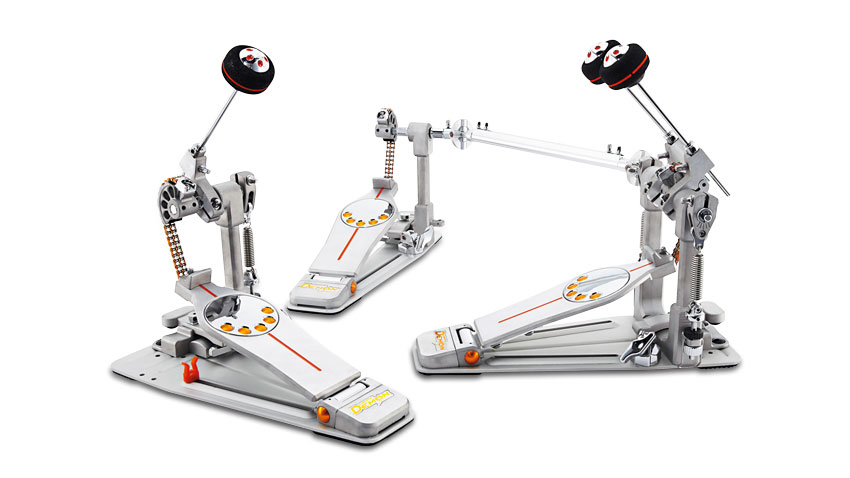MusicRadar Verdict
The speed at which these pedals interpret each step is incredibly smooth, fast and accurate. Although we had previously played with the direct-link Demon a year or so ago, to us, the 'chain' seems to give a slightly more organic feel - a little less like attempting to connect to a machine. Impressive!
Pros
- +
Amazingly playable. Very good build quality.
Cons
- -
You pay for this kind of quality.
MusicRadar's got your back
When the original Demon Drive drum pedal made its debut at NAMM 2009, its ground-breaking features had it voted 'Best in Show'.
What made this show-stopper so radical wasn't necessarily down to its direct linkage drive, or the fact that it was indeed wickedly fast and (with the assistance of NiNjA skateboard bearings) smoother than eels in a bucket of silicone - it was (and still is), a piece of engineering brilliance which awards the pedals their immense versatility.
Build
Instead of the direct drive, these new models sport a more conventional chain drive system consisting of a 'perfect circle' linear response cam (inspired by motor racing), and a dual chain, complete with NiNjA rollers.
The modular construction starts with a steel baseplate on which the various cast aluminium components attach with Allen bolts. Beaters feature an internal 'elasticore' which acts as a form of shock absorber.
Pearl has retained all of the features which makes the pedals so unique - the 'Duo-deck' footplate allows it to be used either as a standard 'short' pedal or extended, giving extra power but with less control. The beater stroke can also be positioned further away from the batter head or closer to it - again a compromise of power over controllability.
The double pedals attach to each other via the zero latency 'Z-link' (also inspired by motor racing) aluminium drive-shaft with its smooth gyroscopic joints. The pedals' modular construction allows the double to be converted into a right-hand remote - giving lefties the chance to enjoy the pedal too!
It is interesting to note, if initially purchasing a single pedal (but later deciding to go for a double), the single can be easily converted into a double with the optional components available from Pearl.
Want all the hottest music and gear news, reviews, deals, features and more, direct to your inbox? Sign up here.
Hands On
Within a second or two of performing with the pedals (double and single), it became clear that we previously must have been playing in some stodgy treacle, with our old pedals holding me back. To check whether we would experience the same type of feel on the double, this was given some additional testing where we played the left remote with our right foot and managed equally impressive results.
After playing for a short while (back in the usual seated position!), things felt so comfortable that we had to remind ourselves we were playing on some new models with frequent 'did we just play that?' moments.
